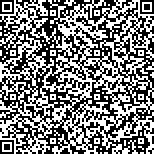| 引用本文: | 罗俊,张妮,马小攀,王道平,兰才武,潘卫东.HPLC测定黔产钩藤不同部位钩藤碱和异钩藤碱的含量[J].中国现代应用药学,2019,36(14):1733-1737. |
| LUO Jun,ZHANG Ni,MA Xiaopan,WANG Daoping,LAN Caiwu,PAN Weidong.Determination of Rhynchophylline and Isorhynchophylline from Different Parts of Uncaria Rhynchophylla (Miq.) Miq. ex Havil by HPLC[J].Chin J Mod Appl Pharm(中国现代应用药学),2019,36(14):1733-1737. |
|
| 本文已被:浏览 2168次 下载 1272次 |

码上扫一扫! |
|
|
| HPLC测定黔产钩藤不同部位钩藤碱和异钩藤碱的含量 |
|
罗俊1,2, 张妮2, 马小攀2, 王道平2, 兰才武3, 潘卫东2
|
|
1.贵阳中医药大学, 贵阳 550025;2.贵州省中国科学院天然产物化学重点实验室/贵州省天然药物工程研究中心, 贵阳 550014;3.昌昊金煌中药有限公司, 贵州 丹寨 557500
|
|
| 摘要: |
| 目的 HPLC测定黔产钩藤不同部位中钩藤碱和异钩藤碱的含量,并比较其差异。方法 以钩藤碱、异钩藤碱为对照品,采用CAPCELL PAK C18色谱柱(4.6 mm×250 mm,5μm),以乙腈-0.1%三乙胺水溶液(1%磷酸调pH=9)为流动相,流速1 mL·min-1,检测波长245 nm,柱温30℃,进样量10µL。结果 钩藤碱与异钩藤碱分离良好,线性、重复性以及回收率均符合要求,钩藤不同部位中的含量存在差异,由高到低依次为皮 > 茎 > 带钩茎枝 > 叶,而茎薄壁组织与木质部未检测到钩藤碱与异钩藤碱。结论 该含量测定结果为钩藤资源的充分利用提供了科学依据。 |
| 关键词: 钩藤 钩藤碱 异钩藤碱 高效液相色谱法 |
| DOI:10.13748/j.cnki.issn1007-7693.2019.14.002 |
| 分类号:R284.1 |
| 基金项目:国家自然科学基金项目(81660580);贵州省中药材现代农业产业技术体系建设项目(GZCYTX2015-0202);贵州省科技计划项目(黔科合支撑[2019]2757号);2018年贵阳中医学院研究生工作站及研究生创新实践基地创新项目(GNYL[2017]008号-7-Y) |
|
| Determination of Rhynchophylline and Isorhynchophylline from Different Parts of Uncaria Rhynchophylla (Miq.) Miq. ex Havil by HPLC |
|
LUO Jun1,2, ZHANG Ni2, MA Xiaopan2, WANG Daoping2, LAN Caiwu3, PAN Weidong2
|
|
1.Guiyang University of Traditional Chinese Medicine, Guiyang 550025, China;2.The key laboratory of Chemistry for Natural Products of Guizhou Province and Chinese Academy of Sciences/Guizhou Provincial Engineering Research Center for Natural Drugs, Guiyang 550014, China;3.Gold Sparkle DZ Chinese Medicine Co., Ltd., Danzhai 557500, China
|
| Abstract: |
| OBJECTIVE To determine the contents of rhynchophylline and isorhynchophylline from different parts of Uncaria rhynchophylla by HPLC and compare the difference of contents. METHODS Rhynchophylline and isorhynchophylline were used as reference substances. CAPCELL PAK C18(4.6 mm×250 mm, 5 µm) was used for chromatographic separation. The mobile phase was acetonitrile-0.1% triethylamine solution(adjust pH to 9 with 1% phosphoric acid). The flow rate was 1 mL·min-1, the detection wavelength was 245 nm, the column temperature was 30℃ and the injection volume was 10 µL. RESULTS Rhynchophylline and isorhynchophylline separated well. The linearity, repeatability and recovery also met with the requirements. There were difference from different parts in U. rhynchophylla. This study showed that the contents of rhynchopylline and isorhynchophylline were in an order as:bark > stem > hooked stem > leave. Rhynchophylline and isorhynchophylline could not be detected in stem parenchyma and xylem. CONCLUSION The results of this study provide a basis for the full utilization of U. rhynchophylla. |
| Key words: Uncaria rhynchophylla (Miq.) Miq. ex Havil rhynchophylline isorhynchophylline HPLC |
